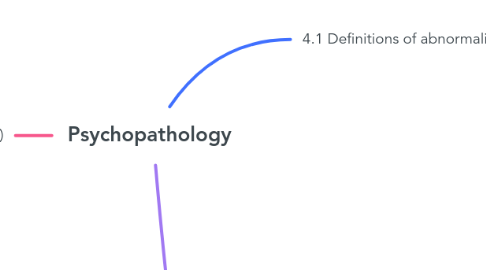
1. 4.1 Definitions of abnormality
1.1. 4.1.1 Deviation from social norms
1.2. 4.1.2 Failure to function adequately
1.3. 4.1.3 Deviation from ideal mental health
1.4. 4.1.4 Statistical infrequency
1.4.1. - When someone is considered mentally abnormal it means that their mental condition is very rare within the population. - The rareness or the behaviour is judged objectively with statistics, to compare the persons behaviour within the rest of the population.
1.4.2. Normal distribution curve
1.4.2.1. - Shows a populations average spread of specific characteristics - Mean, Median and Modal scores are all at the highest point (the most common behaviour) - At the ends there are less people with those behaviours - To identify and abnormal behaviour, we can compare the people to the population and identify those at the extreme ends
1.4.2.1.1. Example
1.4.3. Evaluation
1.4.3.1. Strengths
1.4.3.1.1. A strength of using statistical infrequency to define abnormality is that those who have been considered abnormal have been assesed objectively
1.4.3.2. Weaknesses
1.4.3.2.1. A weakness of using statistical infrequency is that the psychological community decides what behaviours are considered to be statistically rare enought to be considered as abnormal, this opinion can be subjective and cause real life implications
1.4.3.2.2. A weakness of statistical infrequency is that not all statistically rare behaviours should be considered negative
